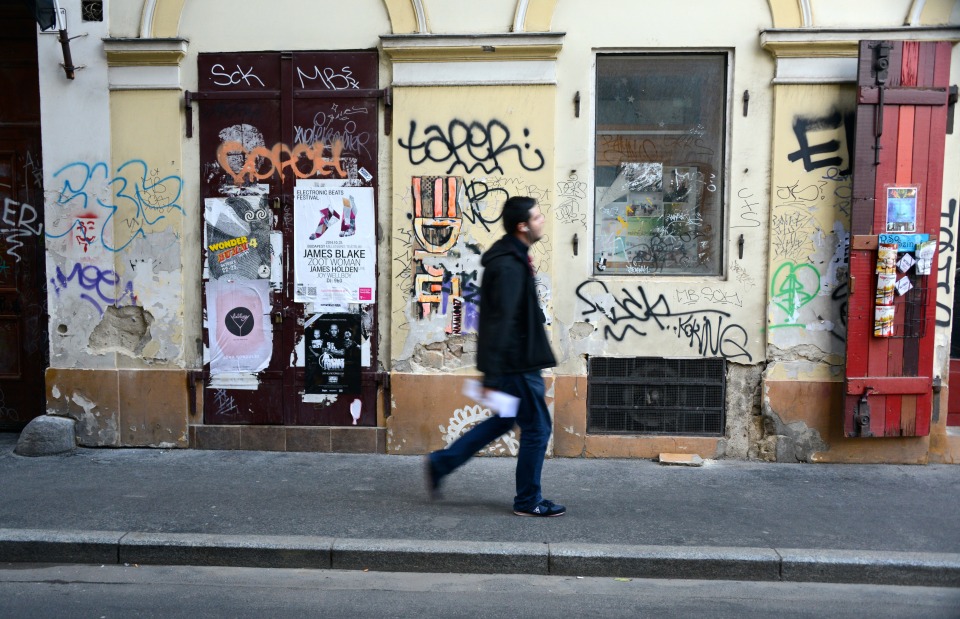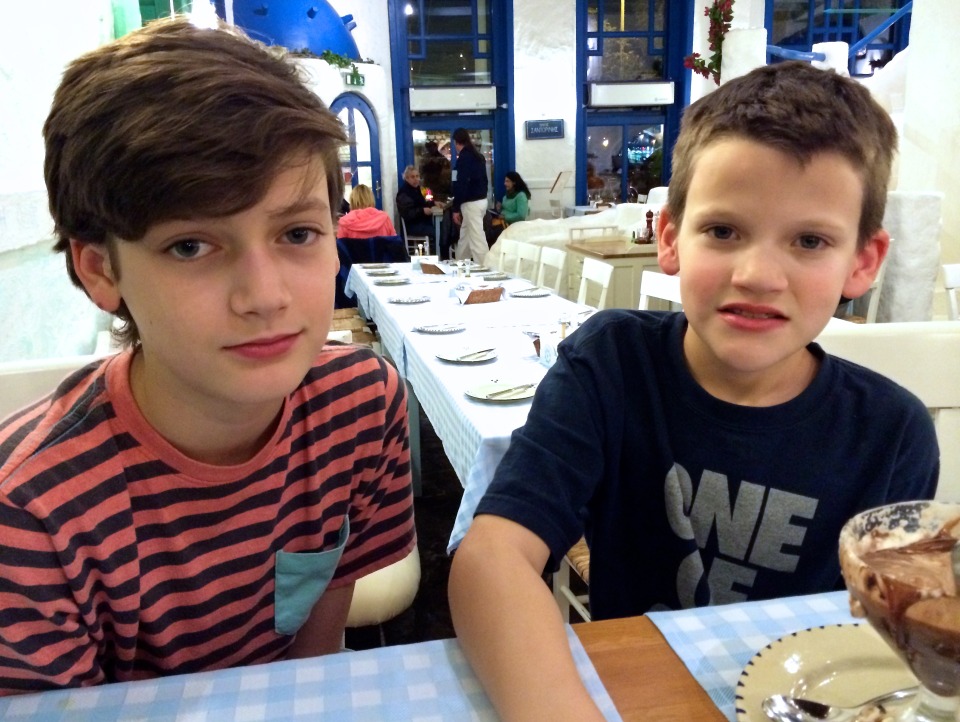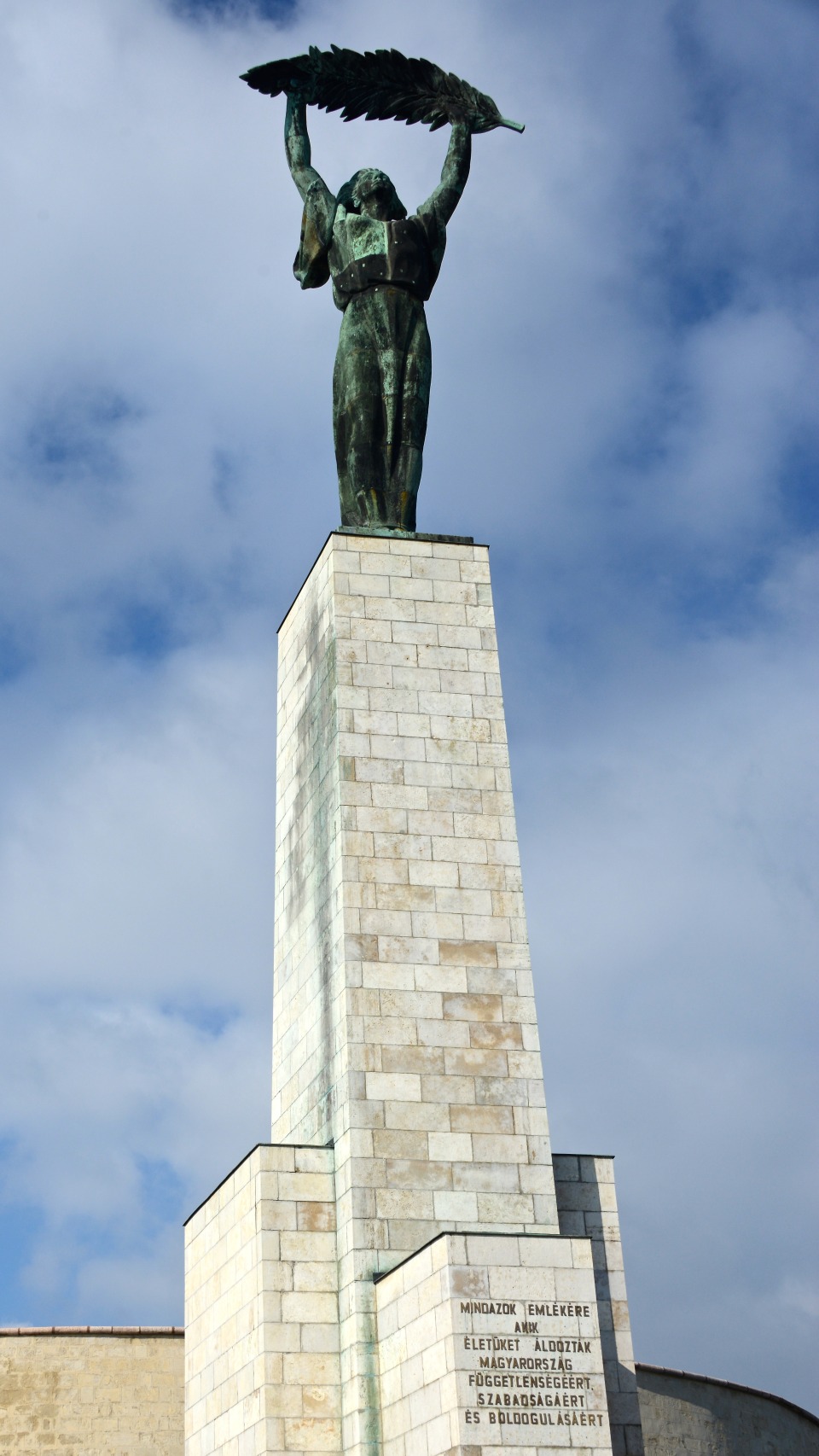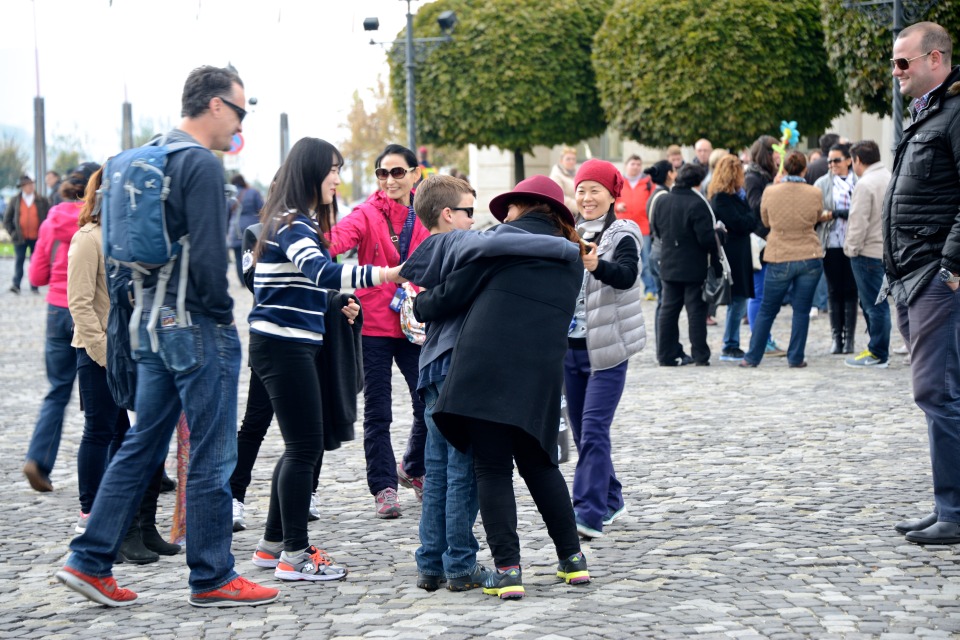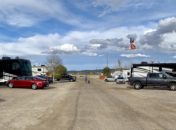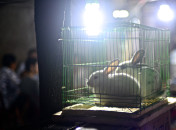Hungary has been free from the Soviet puppet show for 25 years, but my formative years were in the midst of the Cold War. It was the Eighties with Reagan in office and the world’s superpowers still had ideological foundations – democracy vs. communism, Marxism vs. capitalism. Europe was a continent divided into the Western Bloc and the Eastern Bloc, tinted blue or red on the maps hung on my school walls. And in those days, dialogue was hawkish and carried dangerous consequences. One misstep or misstatement – an errant flight path or incendiary words – might bring a nuclear war. My visit to Hungary carried baggage of a bygone era.
I was aware of the Revolution of 1956 and the brutal crackdown by the Red Army, so I wasn’t sure what to expect in Budapest. Time and freedom, it seemed, have suited the city well.
The train ride from Vienna took us across a rural landscape – patchwork farms with ancient tractors and harvesters, birch and beech trees rimmed fence lines and livestock moved slowly through muddy fields. The high impenetrable gray clouds contributed to a mood that this was a forsaken place, and the people we picked up at each of the stations along the route wore sullen expressions, avoided eye contact and sat with their bags wedged between their legs.
The train was very clean and new, but our seats pressed up against the KidZone, which had a German-language muppet-esque show on full blast. Imagine Barney with low-range, dumb-sounding puppets riling up high-pitched squeals from a group of over-sugared kids. For twenty minutes we searched for an on/off switch and considered lugging our bags to another car. Our savior was the young lady offering up coffee, candy and crisps from the snack cart. She didn’t speak much English, but clearly understood me when I pointed at the screen and covered my ears.
We arrived in Budapest Keleti, a vast grimy train station in the heart of the city. The besotted glass panes overhead were so dirty they bathed the enormity of the building in a dismal yellow-gray. Little ramshackle food shacks were set up along the periphery with pigeons flying formations, awaiting a dropped crumb.
We’d arranged for a driver in advance, as taxi drivers in Budapest are notorious for a number of unsavory business practices – i.e., expensive and unnecessary tours of the city. Our driver was nothing if not efficient. Wearing a wrinkled suit, Coke-bottle glasses and a thick salt-and-pepper mustache, he grabbed one of our bags and moved through the station with such alacrity, we lost him, found him and lost him again. I don’t think he looked back to confirm we were still with him until he reached his taxi and we were 100 yards behind, navigating the throngs outside in the cold afternoon air. Although he spoke no English and we were concerned that the rickety van would break into pieces with the slightest pothole, we made it to our hotel safely.
We arrived at our hotel, Butterfly Home, which is situated perfectly for touring Budapest. Our host András greeted us warmly and helped us settle in for our stay, providing recommendations for exploring the city. One of his key recommendations was for Lángos, more about that later. In an attempt to avoid the First Meal Challenge, Angela had made arrangements for us at a Greek restaurant along the Danube called Taverna Dionysis. It was perfect for us as Turkish, Greek and Middle Eastern cuisines are among our favorites, and a great departure from the heavier meaty options found throughout most of Europe. Despite being outside the traditional tourist season, the restaurant was packed with locals … always a good sign.
On Sunday morning after breakfast, Gabor, a six-foot three-inch tall 30 year-old tour guide with a baby-face, picked us up for a three-hour spin through Budapest. Other than the fact that he seemed less than enthused to be out with us on a Sunday, the tour provided a good overview of Budapest. We learned a little about its history and people, and heard very strong opinions from Gabor regarding the current political state of his country. He wanted to make sure that we were safely back at our hotel before it got too late in the afternoon, as a major protest was scheduled near the Parliament. The protest was tied ostensibly to a new proposed Internet Tax, but would also include a number of marchers who were protesting the current regime.
The first stop along our circle through the city was Gellért Hill, where we stopped to admire the Szabadság Szobor, or Liberty Statue. It was erected to remember Hungary’s liberation from Nazi Germany, and the plaque thanks the Soviets for that freedom. Ironically, the Soviets came to oppress the Hungarians for the next 45 years. The statue is powerful and the view of the city below – with the river splitting Buda from Pest – was lovely, with the yellow sun dropping light in columns through the low morning clouds. From there, we visited Castle Hill, walking through the busy neo-Gothic terraces called Halászbástya, or Fisherman’s Bastion. It surrounds the Matthias Church, itself a magnificent structure that looks down on the river and city. The brilliant white limestone turrets and walls seemed illuminated from within. At the Castle we wandered across the square, weaving in and out of tour groups.
GANGNAM STYLE
As we crossed the square toward the west, I inadvertently paused behind a Korean woman standing in front of the Castle. She was very polite in pointing at her group of friends, who were trying to take her picture with the castle in the background. “Will you move,” she said, smiling. I was in a fun mood and acted offended that she wouldn’t take the picture with me in it. Then they saw Asher, and all hell broke loose. At first, each of the eight women wanted a picture taken with Asher and me, then they pushed me out of the frame and only wanted Asher. Other tourists stared, trying to figure out what was going on. The women were super nice and fun, and they all seemed enamored of Asher – squeezing his cheeks and stroking his forehead. One of the women asked him if he knew Gangnam Style, “of course” he said and the two of them danced.
Gabor broke away from us in the midst of the encounter with the Korean women. I assumed we might have embarrassed him a bit, though he was laughing. In reality, he was on a cultural mission. He jetted toward a food stand and returned with a white pastry bag with great plumes of steam rising from it. “This,” he said, “is what we call kürtőskalács.” Translated, it means “chimney cake” in English. The cake was like a columnar cinnamon roll with coconut, milk chocolate and powdered sugar on the outside. It was still warm, and it was delicious. Ronan, who usually doesn’t like sugary treats, first offered to carry the bag, then to finish it off.
Back in the car, Gabor took us by the Parliament building and over to Freedom Square, or Szabadság Tér, a lovely little park and square at the epicenter of Hungary’s complex history. The square, which is less than a quarter mile from the Parliament building, consists of a political and cultural bricolage. In the center is a monument to the Soviet “liberation” of Hungary from the Nazis, and it still immortalizes that moment with a large bronze hammer and sickle. Protesters had banners strewn across the grass in front of it stating in English, “No More Russian Mafia,” clearly showing civil disobedience regarding the current government’s strengthening ties to Russia. Ironically, 50 yards away was a life-sized statue of a smiling Ronald Reagan fashioned as though he is confidently walking across the park. Between two playgrounds was a recent monument of remembrance of the German occupation of Hungary during WWII. It consisted of a line of broken stone columns with a bronze eagle striving for flight against an iron shackle on one of its legs. We learned that this memorial, which was buttressed with hundreds of pictures, old shoes, rocks, dirt, dried flowers and banners, has been deemed a redrafting of Hungary’s complicity in the Holocaust.
After a brief stop in Hero’s Square and a café for coffee, Gabor had a final thing to show us – the original Ruin Pub, Szimpla Kert. Ruin Pubs have brought about a revitalization of the Jewish Quarter in Budapest and represent a unique aspect of the city. In general, setting up a bar (some offer food too) in dilapidated structures, there is no way they would pass any zoning approval in the U.S., with concrete blocks falling from the walls, exposed re-bar and furnishings more likely to be found on a street corner wearing a “FREE” poster, it reflected the diversity of Budapest. Specifically,Szimpla Kert was brimming with hodgepodge and packed with people stepping away from the world outside and into something like a Tim Burton concept drawing. Although I got the nickel tour with Gabor, Angela, the boys and I returned a couple days later so we could have the real experience.
Nagycsarnok is Budapest’s biggest market and a fancy one at that. As big as a basketball arena, it teems with hundreds of shops selling fresh produce, meats, chocolates and herbs, as well as curios stores that sell magnets, stickers, flags, costumes and sundry gewgaws all emblazoned with Hungarian flag and other traditional crests. Beneath elaborate Victorian-styled wrought iron work are several bars, restaurants and food stands. One of the foodstands specialized in Lángos, a traditional doughy treat of deep-fried flatbread with sour cream, cheese and an array of other toppings. András, our host at the hotel, had said, “the real Hungarian way is to eat them is with the sour cream and cheese only. Don’t be sold on adding a bunch of other stuff to it.” We waited in line, a few among 50+ people jostling to place an order, and purchased one to share. It was delicious. Added to the chimney cake from the day before, we agreed that Hungarians know their dough.
We walked along the Danube, past many Viking Cruise ships, essentially long river barges for tourists. Buses were lined up and unloading German and British tourists boarding the boats for the next destination. The stroll along the famous Danube was interesting, lined with parks and parking lots, throngs of visitors. Like any big river flowing through the heart of a big city, it meant watching large chunks of trees or other flotsam passing by in the swirling tea-and-cream waters. Despite Strauss’ romantic waltz “Blue Danube”, the river wasn’t blue or romantic per se; neither here nor in Vienna. It roils and boils and the waves insinuate all sorts of ominous hazards beneath. But the sun was high in the sky and our coats were quickly shed in the warmth of the afternoon.
SHOES ON THE DANUBE
After a 45-minute walk, we arrived at “The Shoes on the Danube Bank” memorial. Sixty pairs of cast iron 40’s-era shoes commemorate the horrific murder of Hungarian Jews by the Arrow Cross militiamen. The militia lined up men, women and children along the river, asked them to remove their shoes, and then executed from behind so that their bodies fell forward into the river and floated downstream away from the city. Visitors continue to place flowers and candles next to the shoes. As with all the Holocaust sites we visited on our travels, this prompted many questions from the boys and difficult answers from Angela and me. The memorial perplexed Asher, who as a curious nine-year-old, struggled to comprehend why something like that could have happened.
From there, we walked around the baroque Parliament building and saw the changing of the guard, then wandered back over to Freedom Square where the boys played at the playgrounds we’d seen the day before. The square was heavily armed. Police officers and military men stood on guard throughout the park and the surrounding streets. They carried semi-automatic rifles and watched pedestrians from behind barricades or inside armor-plated trucks, undoubtedly as a warning to further protests. It was probably the safest place in the city for the boys to climb, run and wrestle. As the sun settled into the hills on the other side of the river, we walked over to the Jewish Quarter where we lounged in Szimpla Kert and visited Indian restaurant for dinner.
Budapest sits atop a geothermal hotspot, with naturally heated mineral waters flowing into pools and spas throughout the city. This has given rise to a “bath culture” among citizens and visitors. Doctors prescribe specific baths for patients suffering from a broad range of ailments. Business people and politicians do business half-submerged in 40°C waters. All great stuff, but for me, the words “public” and “bath” should not be uttered together. So, I wasn’t particularly enthused when we loaded onto the subway toward the famous Széchenyi Thermal Baths in City Park.
The baths at Széchenyi can be appreciated for the scale and grandeur of the neo-baroque complex alone. A series of pools within the main building host elderly men and women participating in various forms of physical therapy. Some pools were as small as a home spa, while others accommodated a hundred or more. All were filled with people standing shoulder-to-shoulder along the edge, staring into the distance or chatting with one another in low murmurs. Enormous pools outside in the cold autumn air were packed with children and adults alike playing in the water.
Despite my initial reluctance, we stayed at the Széchenyi baths for more than four hours. Exhausted and with pruney toes, we wolfed down dinner and went to bed early, as we’d be on the train for Prague the following day.
The taxi driver delivering us to Budapest Keleti was a stout man in his late 50s, mostly bald with gray temples and a thick gray mustache. His fluency in English was expressed through gleeful descriptions of his beloved city. He smiled as we ticked off all the places we visited in Budapest. “You went to Széchenyi baths, yes?” he asked. “It’s the best. Not so touristy.” By the time we arrived at the train station, the recap provided to our driver crystalized our memory of the capital as one of the best, warmest and dynamic cities in Europe.

